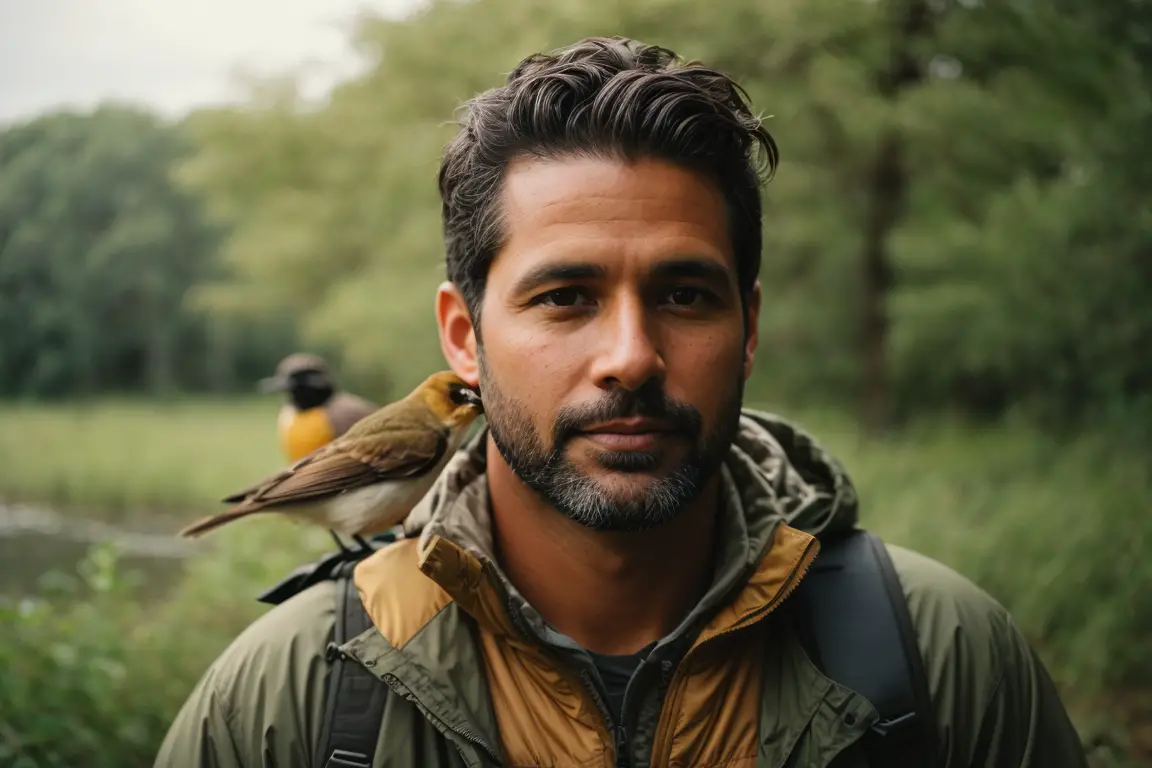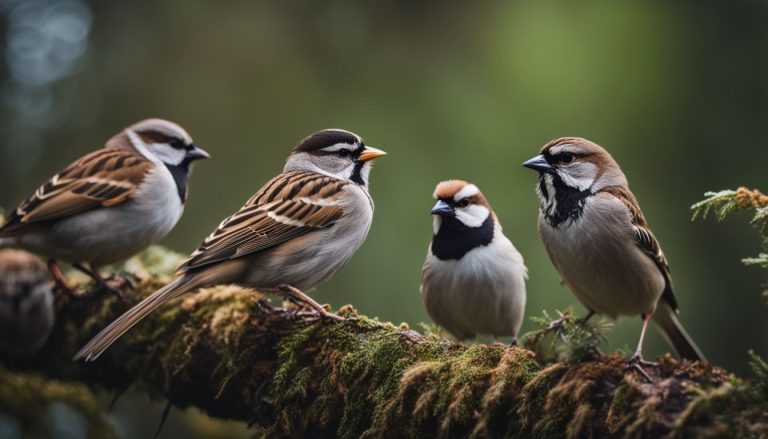Ever found yourself pausing mid-sentence, trying to figure out just the right word for a bunch of ducks? You’re not alone. I have too, and let’s just say it’s more complex than we might initially think.
Who knew there were so many wonderfully quirky terms for these feathered groupings? From ‘waddling‘ and ‘badelyng‘, to even calling them a ‘raft‘ – yup, you read that right! Feeling intrigued yet? Stick around as we dive deep into this webbed-footed world of duck clusters – demystifying what they are called, and more importantly why.
What is a Group of Ducks Called?
A group of ducks can be called a raft, paddling, waddling, badling, team, or flock.
Raft
A raft is another fun name for a group of ducks. You use it when ducks are on water, not land. Why call them a raft? Look at how they stay close in the water. They seem like one big floating object or “raft.” It’s cool to see a raft of ducks moving around a pond or lake.
Keep your eyes open next time you’re near water!
Paddling
When ducks are swimming together in a group, it is called a paddling. Ducks love to swim in lakes and ponds, and when they paddle around together, it creates a really beautiful sight.
A paddling can consist of just a few ducks or even hundreds of them! They all move together, gliding gracefully on the water with their webbed feet. It’s fascinating to watch as they dive for food or just float peacefully.
Ducks have such amazing teamwork when they’re paddling – they stay close to each other for safety and enjoy socializing too. It’s one of the many ways these waterfowl species bond and take care of each other.
Waddling
When a group of ducks is moving together on land, it is called a waddling. The word “waddle” comes from the way ducks walk, with their round bodies swaying from side to side. It’s quite a funny sight to see! A waddling can consist of adult ducks or even ducklings following their mother in a line.
Ducks use this formation for safety and protection when they are not swimming in water. So, if you happen to come across a group of ducks walking together, you can call them a waddling!
Badling
A badling is another term used to describe a group of ducks. It is not as commonly known as “flock,” but it is still used to refer to a gathering of these waterfowl. Ducks in a badling can be seen swimming together on a pond or lake, quacking and flapping their feathers.
They may also take flight together in an organized manner during migration. Unlike some animal groups, there is no specific leader in a badling of ducks. Instead, they work together as equals, looking out for each other’s safety and well-being.
Team
A group of ducks can also be called a team. Ducks walking together on land or swimming in close formation can be referred to as a team. While ducks don’t have a specific leader within their group, they often move together in sync and exhibit coordinated behavior.
Being part of a team allows them to stay safe from predators and navigate their surroundings more effectively. The teamwork among ducks is truly remarkable to observe, as they work together without any designated leader guiding them.
# Keywords:
Flock
A group of ducks is commonly called a flock. It’s the most common term used to describe a gathering of these feathered friends. When you see several ducks swimming together in a pond or puddle, that’s considered a flock.
Ducks really enjoy being in the company of their fellow waterfowl, and they tend to stay close to each other for safety and social reasons. The lack of individual leadership within duck flocks means that decisions are made collectively as they navigate their surroundings and find food.
So next time you spot a bunch of quacking ducks on your bird-watching adventure, remember that it’s called a flock!
Why are Ducks Grouped Together?
Ducks are grouped together for safety in numbers, social behavior, mate selection, and feeding advantages.
Safety in numbers
Ducks often gather together in groups for safety. Being part of a larger group helps protect them from predators. When ducks are in a flock, it’s harder for predators to single out one duck to attack.
Additionally, when the group is large, there are more eyes and ears to watch out for danger. Ducks instinctively know that there is safety in numbers, so they feel more secure when they’re surrounded by other ducks.
This is especially important during migration or when they’re resting on water bodies like ponds or puddles. So, if you ever see a big group of ducks swimming together, remember that they’re helping each other stay safe!
Social behavior
Ducks are social birds and often gather in groups. They exhibit various social behaviors, such as mating displays and vocalizations. In a group, ducks tend to stick together for safety in numbers, which helps protect them from predators.
They also engage in preening each other’s feathers, forming bonds within the group. Additionally, being part of a group allows ducks to find mates more easily and increases their chances of successful reproduction.
Apart from these advantages, grouping together provides ducks with better opportunities for finding food and navigating during migration. These social behaviors contribute to the overall well-being and survival of the duck population.
Mate selection
When it comes to mate selection, ducks have their own unique ways. They often form social bonds and will stay with their chosen mates for a long time. Male ducks, known as drakes, engage in courtship displays to attract females.
These displays can include flapping their wings, head-bobbing, and making special calls or quacks. The females then choose their preferred mate based on these displays and other factors like physical appearance and health.
Once a pair is formed, they will usually stay together during the breeding season to raise their ducklings. So when you see a group of ducks together, there may be some love connections happening among them!
Feeding advantages
Ducks group together not only for safety and social behavior but also for feeding advantages. When ducks feed in a group, they can find food more easily as they work together to search for insects, plants, and small aquatic creatures.
Additionally, ducks create disturbances in the water while feeding which helps bring up food from the bottom of ponds or rivers, making it easier for them to access their meals. This is especially beneficial when food sources are scarce or hidden underwater.
By sticking together and sharing information about food locations, ducks increase their chances of finding enough nourishment to survive.
Other Collective Nouns for Ducks
There are several other collective nouns for ducks, including brace, plump, string, and sord.
Brace
A group of ducks can also be called a brace. It is another term used to describe them when they are together. So, besides flock, waddling, badelyng, paddle and raft, you can use the word brace too! Ducks in a brace stick together for safety and social reasons.
There is no specific leader among ducks in a group, but they still manage to stay close and take care of each other.
Plump
When a group of ducks is gathered together, they can also be referred to as a “plump.” This term is not as commonly used as “flock,” but it is still recognized. So, if you see a bunch of ducks hanging out together, you might describe them as a plump.
It’s just another fun way to talk about these adorable waterfowl!
Ducks are known for their social behavior and safety in numbers. They often gather in groups to protect themselves from predators and increase their chances of survival. Being part of a plump helps them stay safe and find food more easily.
Plus, being around other ducks gives them the opportunity to engage in important social activities like mating and communication.
String
A group of ducks can also be called a “string.” This term is not as commonly used as “flock,” but it is still recognized. When ducks are swimming together in a line, they resemble a string, hence the name.
It’s interesting to learn about the different names that can describe these fascinating birds when they gather together!
Sord
A sord is another term that can be used to refer to a group of ducks. It’s not as common as “flock,” but it is still recognized. So, if you ever hear someone talking about a sord of ducks, they’re just using a different word for the same thing.
It’s interesting how there are so many different collective nouns for ducks, showing just how diverse and fascinating these waterfowl can be.
The Significance of Duckling Groups
Duckling groups, known as broods, are essential for the protection and care of young ducks. They provide a safe environment for learning and development. Curious to know more? Keep reading!
Brood
A brood of ducks is a group of ducklings that are together with their parent or parents. It’s like a family unit. The term “brood” is commonly used for a group of young ducks. In the UK, a brood can also refer to ducklings on dry land.
Within the brood, the adult ducks provide protection and care for the little ones as they grow and learn. The parent ducks teach the ducklings important skills such as swimming and finding food.
Being part of a brood is crucial for the survival and development of these young waterfowl.
Protection and care
Ducklings are adorable and they need protection and care from their parents. A group of ducklings is called a brood, and they stay close to their mother for safety. The mother duck watches over them and keeps them safe from predators.
She also teaches them important skills like swimming and finding food. Ducklings rely on their parents for warmth and guidance until they are old enough to take care of themselves.
It’s amazing to see how the parents take care of their little ones!
Learning and development
As ducklings grow, they go through a period of learning and development. They learn important skills from their parents, such as how to find food, swim, and fly. Ducklings stay close to their mother for protection and guidance.
They also observe other ducks in their group to learn from them. This is crucial for their survival in the wild. As they get older, ducklings become more independent and start exploring on their own.
It’s fascinating to watch these young birds develop and adapt to their surroundings as they continue on their journey of growth.
Conclusion
In conclusion, a group of ducks can be called a flock, waddling, raft, brood, or team. These collective nouns describe the different ways ducks gather together. Ducks group together for safety in numbers and to socialize.
They also form groups during mating season and when looking for food. Different terms are used depending on whether the ducks are on land or in water. So next time you see a bunch of ducks hanging out together, remember that they have their own special names!
FAQs
1. What is a group of ducks called?
A group of ducks is often known as a “raucous.”
2. Why are they part of the Anatidae family?
Ducks belong to the Anatidae family because they share common traits with swans and geese.
3. Who gives this name to a group of ducks?
The British Bird Lovers organization gave the name “raucous” to groups of ducks.
4. Is Mallard also under the category Anatidae?
Yes, Mallard is one type of duck that falls under the Anatidae family.
I’m Owen Featherstone, your bird-watching buddy and enthusiast of all things feathered! Armed with binoculars and a notebook, I’m on a never-ending quest to uncover the mysteries of our avian friends. Whether it’s deciphering melodies in a dawn chorus or finding out if hummingbirds ever take coffee breaks, I’m here to share the delightful world of birds with you. So grab your virtual wings, and let’s explore the skies together!




